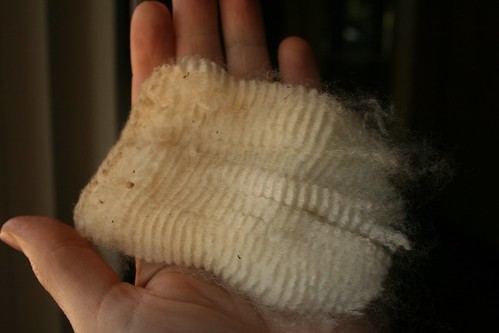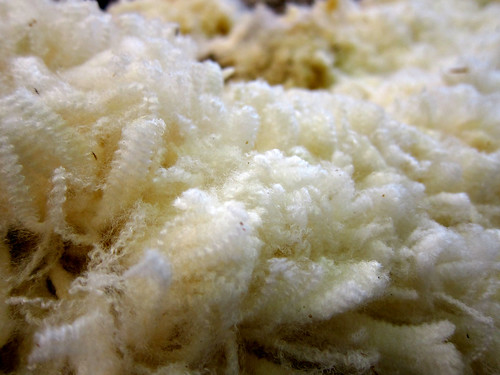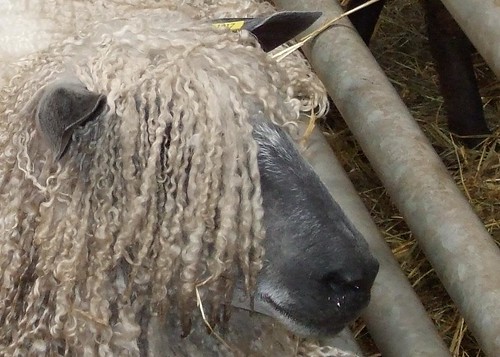Last year I finally came to the conclusion that for me, raised beds will be a necessity :( Too many moles/voles in my yard, and nothing I've done so far has kept them out or trapped them. Too much tunneling through the garden and damaging the roots of just-planted transplants, and I got tired of every single allium being dragged down into underground tunnels, leaving nothing but a tiny hole above ground. My solution: a raised bed with 1/4" hardware cloth stapled to the bottom!
I used 8'x12"x1 pine boards, so that I would have enough depth for root crops. Other types of wood might last longer, but then I wouldn't have been able to afford to do this at all. As it is, I can only put in one new raised bed a year. I will eventually have to put them on the double-dug in-ground beds as well, otherwise I won't be able to rotate crops effectively. So far it seems to be working really well!
This is the best lettuce I've ever grown, and the Swiss chard has actually gotten past 8" high! I still have a bunch of room - I'm going to see how carrots and onions do. I know it's late to be planting onions, but I don't need them to be storage onions - I can eat them at whatever size they are when the season ends. Lucky for me,
Comstock, Ferre in Wethersfield was purchased by
Baker Creek last year, so I now have a great source of heirloom seeds not ten minutes away! No shipping charges! So just because I could, and because this is CT, I bought seeds for Wethersfield Red onions, and Southport Globe onions. I figure if they were named after towns in CT they should grow well here!
In other good garden news, I had much better luck with my soil-block-started seedlings than I have in the past. I added more soil and vermiculite to the mix, and I didn't try and start as many seeds at once this year. I have half as many tomato plants, but they are all much healthier. I also think it doesn't hurt that I acquired a population of Red Wigglers that were living in the bag of topsoil I added last year, and they've been happily living in my dirt bin all winter. Not true vermicomposting, but every once in a while I add some scraps to the bin. I don't have a stinky mass of dead worms, so they must be doing OK :)
I also discovered that some tiny potatoes I had bought last year at the farmer's market and forgotten about had started putting out roots - so on a whim I planted a few of them. First time growing potatoes - we'll see how they do. Some of them are purple!
What was originally my Herb Bed is now starting to become the Perennial Herb Bed. The oregano and thyme are getting really big, the chocolate mint I got last year is spreading, and some of my spearmint is still alive (what kind of soil kills mint?!). The lavender I got last year will also get bigger as it gets older, so I think I'm going to mostly keep this bed for the perennials, and start planting my annual herbs in with the other plants in the raised beds.
Of the ten raspberry canes my SIL gave me last summer, five managed to survive the winter and are putting up new canes. I only had one new cane last summer (all the others were fruiting canes), so I didn't expect to get many berries this year. Next year should be much better!
Even better, a lone strawberry plant hitch-hiked in with the raspberry canes, and is now sending out runners! In another year or so I may have strawberries! I would have had some this year, but something ate through the stem holding all the blossoms :(
Saving the best for last, I finally got a blueberry bush this year! I will need more, considering the rate at which my daughter will eat blueberries, but this is a start! I'm planning on building some sort of PVC frame to drape netting over, to keep birds and bugs out after the berries have formed.
Every year things get a little better, and I get a little more actual food out of my garden. I just need to plant rhubarb and start an asparagus patch, and I should be set for perennials. Now if it will just stop with this raining-all-week and sunny-on-the-weekends so I can get some garden work done while my daughter is at school!





